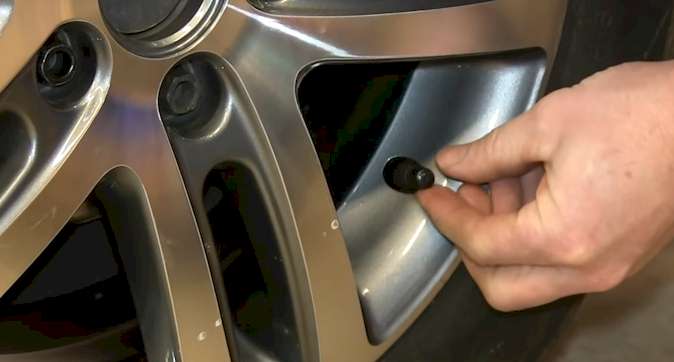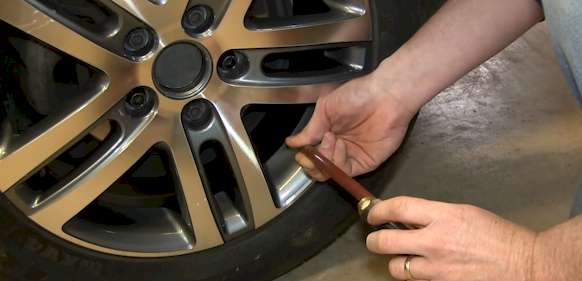Many car owners no longer find it necessary to do car maintenance at home. They can learn how to drive and buy any car they want without bothering to learn car maintenance basics.
If the car needs cleaning, they drive into a car wash. If the car needs some tuning, they drive into an auto repair shop.
Even the mere task of putting air in car tires is no longer common sense among modern drivers. All you have to do is drive to the nearest gas station and have the service crew fill your car tires for you.
However, despite the advantages of these modern services, learning some essential car maintenance will better benefit you and your car. One of the basics you should be able to do on your own is how to put air in car tires at home.
How to Determine When Car Tires Need More Air
First, before you can fill a car tire with air, you need to know how to determine how much air each tire needs. You can do this by obtaining a tire pressure gauge.
A tire pressure gauge is a handheld device that is used to measure how much air pressure is present within a tire. There are three common types of tire pressure gauge:
The pencil type and dial gauges are more common, but you need to be able to read or interpret their measurements.
Digital gauges, on the other hand, display the exact measurement reading and don’t need to be interpreted.

All three types of gauges are commonly used the same way, using the following steps:

- Find the tire’s valve stem. It’s usually located along the wheel’s inner rim and can be either made of metal or rubber.
- Remove the valve stem’s cap by completely unscrewing it. Keep the cap where you won’t lose it.
- Connect the pressure gauge by pressing its open end into the open valve. Sometimes, there’s a small button or knob at the side that you need to press to fit the gauge in.
- Press the gauge firmly and hold it steady as it measures the car tire pressure. You can usually hear a soft rushing sound as it forces its way up the gauge.
- When the gauge stops, or you no longer hear the rushing sound, pull the pressure gauge away from the valve. Read and record the pressure measurement.
- Compare the reading to the tire’s recommended pressure level. It’s usually indicated on a sticker on the car’s doorjamb and in the car’s manual.
- If the actual reading matches the recommended pressure, you can replace the valve cap on. If the reading shows
- Repeat these steps for the rest of the tires, including the spare tire.
Air pressure is usually expressed in psi. A tire will need more air if the pressure gauge shows a reading that is 3 psi below the recommended measurement or level.
For example, if the tire’s recommended pressure level is 30 psi, you’ll need to add more air if the actual reading falls below 28 psi. Also, under-inflated tires can lower your car’s gas mileage by 0.2 percent per 1 psi drop.
Sometimes, the rear wheels’ recommended air pressure may vary from the front wheels’ recommended level. That’s why you need to closely check each of the tire’s maximum tire pressure before proceeding to add air into them.

How to Put Air in Car Tires at Home

To put air in car tires at home, you’ll need an air compressor that you can hook to your car’s power socket, cigarette lighter, or battery terminals. A portable air compressor is most recommended as you can store it in the car’s trunk and use it whenever and wherever needed.
To add or put more air in car tires using a portable air compressor, follow these steps:
- Start your car and plug the air compressor according to its manufacturer’s instructions. Some models can be hooked to your car’s cigarette lighter or power socket, but some may need to be hooked to the battery terminals.
- Connect the inflation nozzle to the tire’s valve stem by pressing its open end down into the valve.
- Start the compressor on. It will automatically inflate the tire, but you must stop or turn it off once it reaches the recommended level to avoid over-inflation. You can check the pressure through the compressor’s digital screen.
- After turning the compressor off, remove the nozzle from the valve. Replace the stem valve’s cap by screwing it back on.
- Repeat steps 2 to 4 for the rest of the tires (and the spare tire).

Some air compressors have advanced features like auto shut-off, where you can set the maximum pressure and the compressor will automatically shut off once that level is reached. This kind of feature protects your tires from being over-inflated.
Benefits of Learning to Inflate Car Tires at Home
Learning how to inflate car tires on your own has several benefits, such as:
You can save time.
By checking your car tires’ air pressure and inflating them as needed before leaving home, you can skip waiting in line at gas stations or service stops to have your tires checked and filled up.
You won’t have to depend on others to fill up your tires.
You can inflate tires on your own whenever and wherever necessary. This is especially helpful during tire emergencies when you're stuck somewhere, and no service station is in sight.
You can personally improve your car’s gas mileage.
You can save around 0.6 to 3 percent on gas mileage when your car runs on properly inflated tires. By being able to maintain your tires’ recommended pressure level, you can up your savings and improve gas mileage.
You can ensure a safer driving experience.
Proper inflation gives your tires better traction and handling on the road. This makes driving safer and prevents road accidents due to tire problems.
You May also Interest in Reading the Post
Final Tips
In conclusion to this guide, here are some helpful tips that you should know when checking tire pressure and adding air:

Now you’ve learned how to put air in car tires at home.
Simon graduated with a Mechanical and Electrical Engineering Degree. He has over 20 years of servicing experience in both Japanese and German car dealerships. He now acts as a freelance mechanic’s instructor for local schools.

